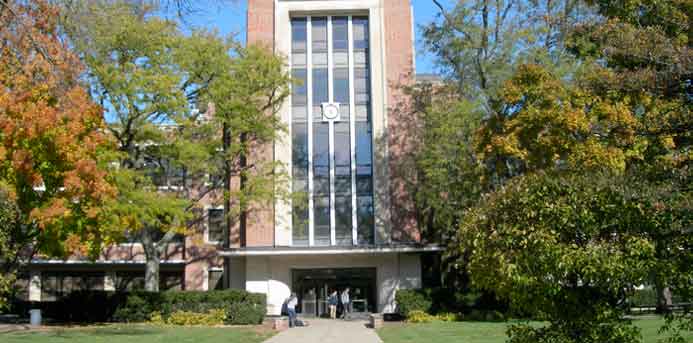This month the New Trier Board of Education will vote whether to place a referendum on the February ballot to pay for a proposed $174 million renovation and expansion of the New Trier East facility in Winnetka.
Between now and the vote, the issue is likely dominate political and education discussions in Wilmette, Winnetka, Kenilworth and Glencoe, the North Shore communities served by the high school with a national reputation for excellence.
The plan pending before the board involves replacing the oldest buildings on the Winnetka Campus—some dating back to 1912—with efficient structures designed for current and future classroom innovations.
“We have not built a standard classroom here since 1957,” says Linda L. Yonke, New Trier Superintendent. “We are not meeting our needs in the curricular and extra- curricular areas.”
The proposed multi-faceted plan calls for demolition of three buildings on the west side of the campus:
- The Cafeteria built in 1912
- The Music and Performing Arts Building circa 1950
- The Tech Arts building constructed in 1931
And on the east side of the campus demolition of:
- The 81 year-old Gates Gym
- The Boiler Plant
New construction on the West side of the campus will include modern classrooms for science, math, English, social studies, business, modern and classical languages as well as space for the performing arts programs.
The East side of the campus will be the site of a new main gym, a new field house and 15 new classrooms.
A relatively steady student population of 4,000 a-year for the next 20 years is factored into the plan which also calls for a 5% increase in physical footprint of the campus over its current size. The Northfield campus would remain dedicated to freshman classes.
Accessibility throughout the entire school will be improved for students, visitors and staff with physical disabilities
When completed there will be both improved parking and better traffic flow around the often- congested campus and bordering neighborhoods, improved accessibility. Underground parking for staff and faculty is also included in the proposed plan.
School officials and consultants estimate that without the project, the district will spend an estimated $85 million in repairs and infrastructure replacement over the next 20 years.
Superintendent Yonke says that the campus is behind the dramatic technological changes that have taken place in education in recent years and the proposed project will position the district to be ready for changes that may come in the future.
“The current building has 2,5000 square feet (dedicated to) technology, the new one would have 18,500 square feet for computer labs and radio and television production,” she says.
Assuming voters approved the referendum, school officials believe they may qualify for some federal stimulus funding and be able to take advantage of the building downturn to contract for new construction at 2007 prices.
“It is a time of both difficulty and a time of opportunity,” says Yonke.

